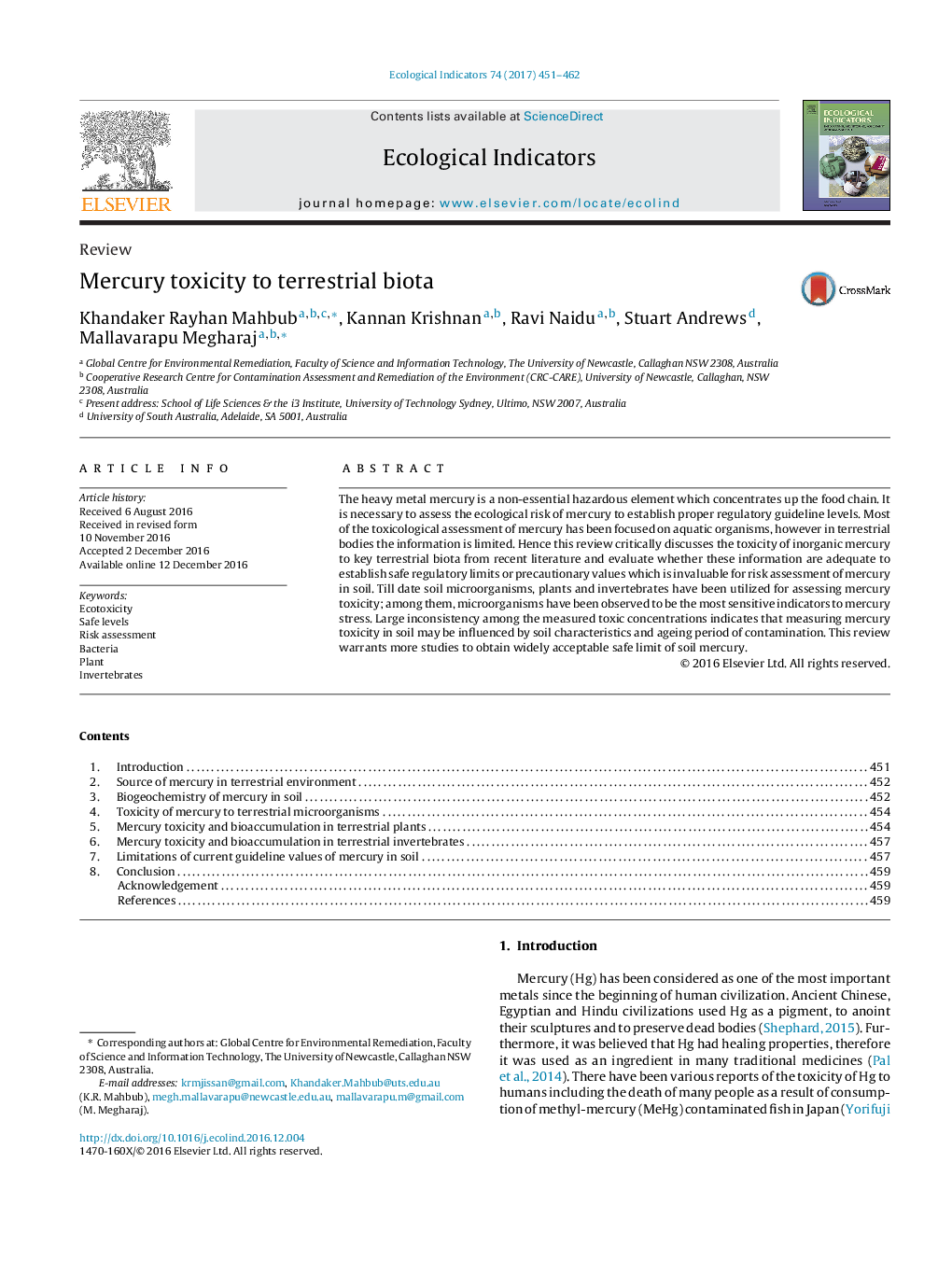| Article ID | Journal | Published Year | Pages | File Type |
|---|---|---|---|---|
| 5741871 | Ecological Indicators | 2017 | 12 Pages |
â¢Available literature on mercury (Hg) toxicity to soil biota has been reviewed.â¢Microbial processes are sensitive to Hg, should be considered in Hg risk assessment.â¢Data on Hg phytotoxicity is scarce.â¢Earthworm's growth and reproduction be used as endpoints, other than mortality.â¢During toxicity analysis in soil, sufficient aging period has to be considered.
The heavy metal mercury is a non-essential hazardous element which concentrates up the food chain. It is necessary to assess the ecological risk of mercury to establish proper regulatory guideline levels. Most of the toxicological assessment of mercury has been focused on aquatic organisms, however in terrestrial bodies the information is limited. Hence this review critically discusses the toxicity of inorganic mercury to key terrestrial biota from recent literature and evaluate whether these information are adequate to establish safe regulatory limits or precautionary values which is invaluable for risk assessment of mercury in soil. Till date soil microorganisms, plants and invertebrates have been utilized for assessing mercury toxicity; among them, microorganisms have been observed to be the most sensitive indicators to mercury stress. Large inconsistency among the measured toxic concentrations indicates that measuring mercury toxicity in soil may be influenced by soil characteristics and ageing period of contamination. This review warrants more studies to obtain widely acceptable safe limit of soil mercury.
